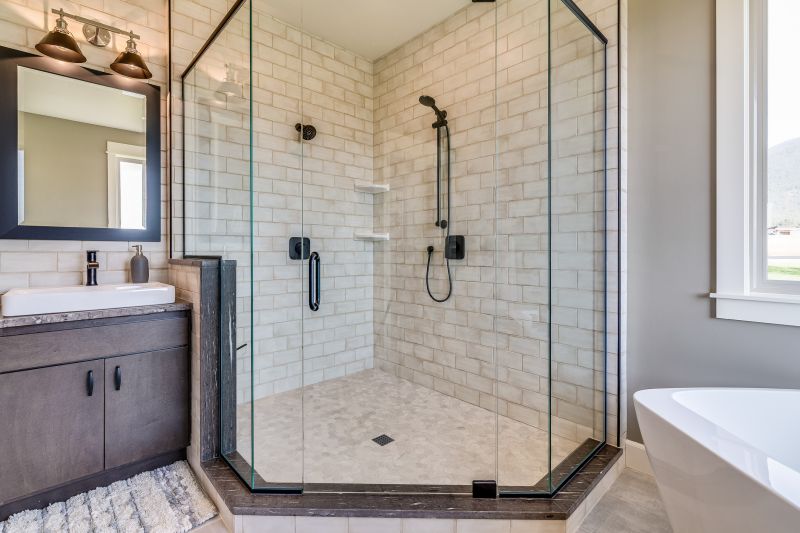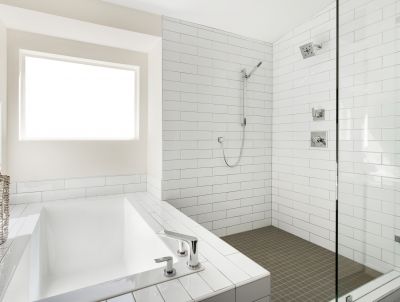Optimized Shower Configurations for Small Bathroom Designs
Corner showers utilize two walls of the bathroom, freeing up more space for other fixtures. They are ideal for maximizing small bathroom areas and can be designed with glass enclosures to create an open, airy feel.
Walk-in showers eliminate the need for doors or curtains, offering a sleek look and easier access. They often feature a single glass panel or open entry, making the bathroom appear larger and more open.

A compact corner shower with glass doors fits neatly into tight spaces, providing practicality without sacrificing style.

A linear shower design with a single glass wall creates a streamlined look, ideal for narrow bathrooms.

Incorporating niches into shower walls maximizes storage without encroaching on the limited space.

An open walk-in shower with minimal framing enhances the sense of space and simplifies cleaning.
Optimizing small bathroom shower layouts involves choosing the right fixtures and configurations. Compact shower stalls with sliding doors can save space while maintaining privacy and functionality. Frameless glass enclosures are popular for their clean lines and ability to visually expand the area. Additionally, selecting fixtures with a minimal footprint, such as wall-mounted controls and narrow showerheads, contributes to a less cluttered appearance.
Incorporating thoughtful storage solutions is essential in small shower spaces. Built-in niches, corner shelves, and recessed shelving prevent clutter and keep essentials within easy reach. Lighting also plays a crucial role; bright, well-placed lighting can make a small shower feel more open and inviting. Using light-colored tiles and reflective surfaces further enhances the perception of space, creating a bright and airy environment.
Material choices impact both the style and function of small bathroom showers. Large-format tiles reduce grout lines, making cleaning easier and creating a seamless look. Clear glass doors and panels allow light to flow freely, avoiding visual barriers. Textured tiles can add visual interest without overwhelming the space, while waterproof and durable materials ensure longevity and ease of maintenance.





